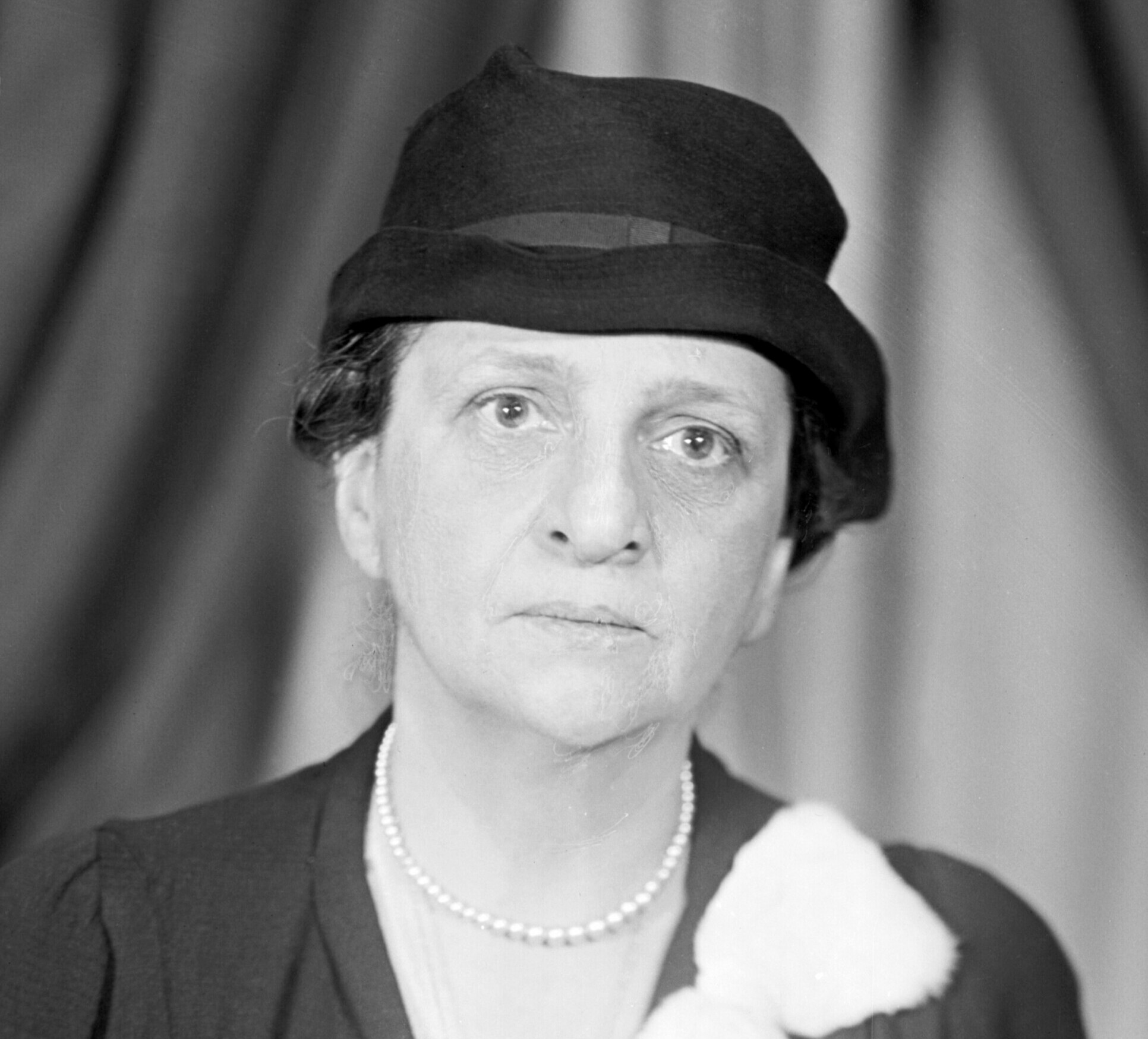Frances Perkins
Special to the Newsletter
by Michael F. Bishop
When Frances Perkins was appointed Secretary of Labor by President Franklin D. Roosevelt in 1933, she became the first woman ever to serve in a presidential cabinet. As she embarked on her new role, she declared, “I came to Washington to work for God, FDR, and the millions of forgotten, plain common workingmen.” She played a pivotal role in shaping labor policies and social reforms during the Great Depression and beyond.

Fannie Coralie Perkins was born in Boston, Massachusetts on April 10, 1880, in comfortably middle-class circumstances. She was a studious child who attended Mount Holyoke College and graduated in 1902 with a degree in chemistry and physics. There, Perkins was exposed to progressive ideas through courses and speakers who advocate for social reform. Influenced by the settlement house movement, she volunteered at Chicago’s Hull House, where she worked with impoverished immigrant communities. This experience set off her lifelong commitment to social justice and labor reform. She later earned a master’s degree in political science from Columbia University in 1910.
Perkins’ personal life was marked by sacrifice. She married economist Paul Wilson in 1913; they had a daughter, Susanna, but Wilson’s mental health struggles and institutionalization placed emotional and financial burdens on Perkins, who remained discreet about her challenges to protect her public role.
Her early career focused on workers’ rights. In New York City, she worked with the National Consumers League, pushing for better working conditions, particularly for women and children. She witnessed the Triangle Shirtwaist Factory fire, a tragedy that killed 146 workers, mostly young women, because of unsafe conditions and locked exits. The disaster galvanized her resolve to improve workplace safety. She joined the New York Committee on Safety and worked with state legislators like Al Smith and Robert Wagner, who later became key allies in her reform efforts.
Her political ascent began under Governor Al Smith, who appointed her to the New York State Industrial Commission in 1919. She rose to chair the commission under Governor Franklin Roosevelt in 1929, gaining experience in labor policy and administration. She championed shorter workweeks, factory inspections, and workers’ compensation, laying the groundwork for national labor standards.
After Roosevelt’s election, Perkins accepted the role of Secretary of Labor only after securing Roosevelt’s support for an ambitious agenda, including unemployment insurance, old-age pensions, and minimum wage laws. As secretary, she faced skepticism from male colleagues, labor leaders, and business interests, who doubted a woman’s ability to lead a government department. But Perkins’ tenacity, intellect, and strategic diplomacy silenced many—though certainly not all—of her critics.
Perkins’ most enduring achievement was her role in the passage of the Social Security Act of 1935. As chair of the Committee on Economic Security, she oversaw the development of a groundbreaking program providing unemployment insurance, old-age pensions, and aid to dependent children. Perkins faced fierce opposition from conservatives, who labeled the act “socialist,” and from labor unions wary of government overreach. Her ability to balance competing interests and maintain Roosevelt’s support ensured the act’s passage, establishing a social safety net that—however threadbare and problematic—still exists.
She also spearheaded the Fair Labor Standards Act of 1938, which established a federal minimum wage, a 40-hour workweek, overtime pay, and restrictions on child labor. These measures addressed rampant exploitation in industries like textiles and mining, giving workers dignity and economic stability. Perkins’ advocacy extended to workplace safety, strengthening the Bureau of Labor Standards to enforce regulations and curb industrial accidents.
Her long tenure was often stormy. The Department of Labor struggled with limited resources during the Depression, and she clashed with business leaders who resisted regulation. Her support for labor unions, including the right to collective bargaining under the Wagner Act of 1935, drew conservative criticism. In 1939, impeachment proceedings were initiated against her, partly due to her refusal to deport a labor leader accused of communist ties. The charges were dismissed.
She left the Department after Roosevelt’s 1945 death; afterwards, she served on the U.S. Civil Service Commission under President Harry Truman until 1952, and then she taught at Cornell University. She remains the longest-serving Secretary of Labor in history, and the fourth-longest serving cabinet member. Perkins died on May 14, 1965, aged 85. She was buried in Maine, the home of her ancestors.
In 1980, President Jimmy Carter signed legislation to name the headquarters of the Department of Labor in Washington, D.C., the Frances Perkins Building. At the dedication ceremony on the 100th anniversary of her birth, President Carter declared, “We can be proud to name the Department of Labor Building after one of America’s most remarkable public servants, who was also a strong advocate of social and economic justice.”
Michael F. Bishop, a writer and historian, is the former executive director of the International Churchill Society and the Abraham Lincoln Bicentennial Commission.




